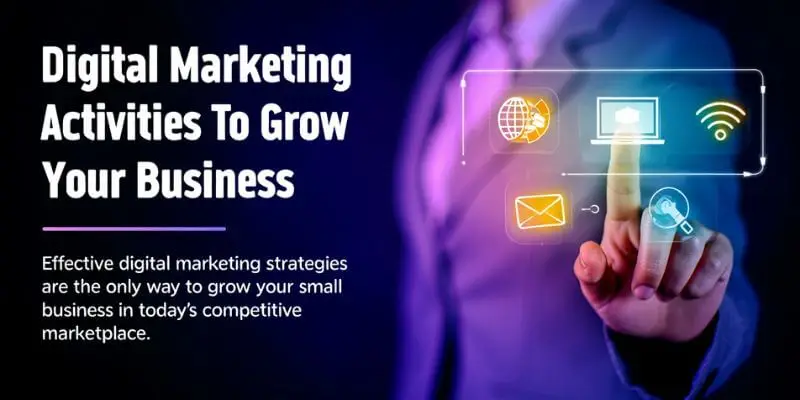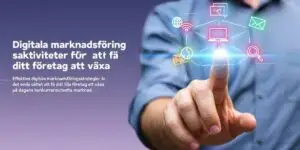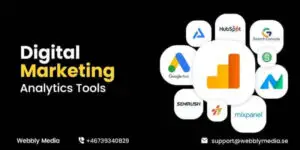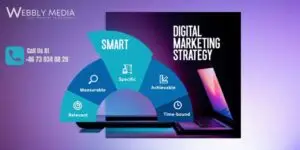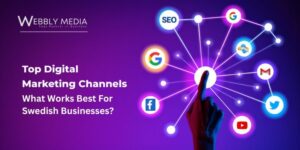In today’s competitive online market, digital marketing activities are evolving faster than ever before. Every year, new technological innovations are impacting consumer behavior. At the same time, AI-driven tools are constantly transforming the digital marketing landscape.
All of these are reshaping the way businesses connect with their audiences. And in this rapidly changing ecosystem, brands that fail to adapt have a high risk of losing their online visibility.
To stay ahead, businesses need to upgrade their marketing approach. They need to replace the old methods with smarter, data-driven, and AI-supported strategies. Whether it’s content, ads, or social engagement, each digital move must be strategic and measurable.
In this blog, we’ll explore the most effective online marketing activities you should try in 2025. So, read on to learn more.
Why Digital Marketing Techniques Matter for Business Growth?
According to eMarketer, global digital ad spending is expected to cross $1 trillion by 2025. Moreover, the recent global studies say that over 80% of consumers now research a brand online before making a purchase. This data clearly shows how important online marketing is for business growth.
Unlike traditional methods, digital marketing offers measurable ROI and a wider reach. Businesses can now track every click, conversion, and customer journey. This makes it easier to understand what truly works. This data-driven approach helps brands spend smarter and grow faster.
Moreover, digital marketing channels like social media, SEO, and email marketing help companies to connect directly with their audience. These platforms boost engagement, build trust, and increase sales by reaching people online. In short, digital marketing doesn’t just promote your brand; it supports sustainable business growth.
Traditional Marketing vs. Digital Marketing Practices

Traditional marketing refers to promoting products or services using offline methods like TV, radio, billboards, and print ads. These methods are strongly effective for brand visibility, but they are often costly, hard to track, and limited to specific areas. You can’t easily measure who saw your ad or what action they took.
On the other hand, digital marketing focuses on online platforms like search engines, social media, and email to reach customers directly. Unlike traditional marketing, it allows for targeted advertising, real-time data tracking, and flexible budgets.
Studies show that an average person spends over 6 hours daily online. This makes digital channels more relevant than ever. In short, while traditional methods still have value, online marketing provides higher ROI, better audience insight, and stronger engagement. That’s why it’s a smarter choice to invest in digital advertising for 2025 and beyond.
Top 10 Digital Marketing Activities to Grow Your Business
In today’s online world, there are numerous platforms available to run online marketing activities. However, not all deliver the same level of impact. The most effective ones are SEO, social media, Google Ads, and email marketing. All of these consistently provide visibility and conversions.
In addition to these, there are many other powerful digital marketing activities available. They are content creation, video marketing, and marketing automation. Each helps brands connect with their audiences more effectively.
In the following sections, we will look at the top 10 proven activities that can help your business grow faster and build a strong online presence.
1️⃣ Search Engine Optimization (SEO)
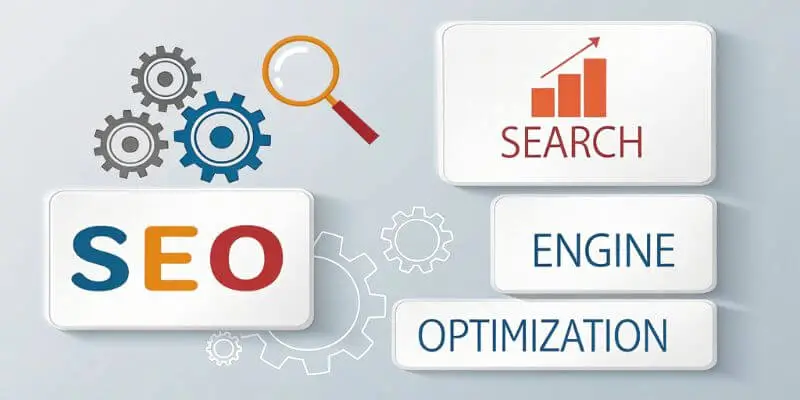
Search engine optimization refers to the process of showing your website on the search engine result pages (SERPs). In simple terms, when people search for products or services that match what you offer, SEO makes sure your business shows up in front of them.
It is the backbone of organic marketing. It improves your visibility over time without paying for ads. SEO works by improving your site’s content, structure, and backlinks to make it easy for search engines to find. As a result, your business gets more organic traffic, trust, and conversions.
SEO has three main parts: On-page SEO, Off-page SEO, and Technical SEO. Each focuses on different areas to improve your website’s performance.
On-page SEO
On-page SEO means optimizing the internal elements of a website. This includes the content, website structure, and user experience. By doing this, search engines can easily understand what your pages are about. This helps your website show up in search results for the right keywords. As a result, you attract relevant visitors and keep them engaged longer. Strong on-page SEO boosts both your website’s ranking and its credibility, making it a key part of successful online marketing.
➤ Key On-page SEO Activities:
- Keyword research and placement.
- Writing clear meta titles and descriptions.
- Optimizing images with names and alt text.
- Creating internal links between related pages.
- Maintaining clean, readable URLs.
- Ensuring a mobile-friendly, fast-loading design.
- Adding proper heading (H1–H6) structure.
- Publishing unique, valuable, intent-focused content.
- Using schema markup for better visibility.
- Regularly updating and improving old content.
Off-page SEO
Off-page SEO includes the external activities that build your website’s authority and reputation online. It’s important because quality backlinks and brand mentions show search engines that your site is trustworthy.
➤ Here’s what it involves:
- Building backlinks from reputable and relevant websites.
- Guest posting and digital PR campaigns.
- Listing your business on directories and review sites.
- Encouraging user-generated content and brand mentions.
- Engaging in influencer outreach and partnerships.
- Social media promotion and sharing valuable content.
Technical SEO
Technical SEO activities are all about improving the backend structure of your website so search engines can easily crawl and index it. Without it, even the best content and on-page optimization won’t perform well.
➤ Here’s what it includes:
- Improving site speed and Core Web Vitals.
- Ensuring mobile responsiveness and secure HTTPS setup.
- Submitting XML sitemaps and optimizing robots.txt files.
- Fixing broken links and redirect errors.
- Implementing schema markup for rich results.
- Checking crawlability and indexation
2️⃣ Social Media Marketing (SMM)
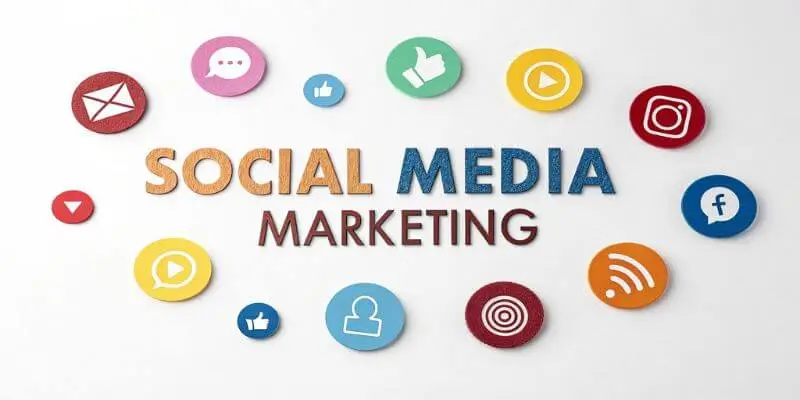
Social Media Marketing (SMM) is the process of promoting your business using platforms like Facebook, Instagram, LinkedIn, and TikTok. It helps brands connect with people and engage with their audience online. Through social media, you can tell your story, build trust, and create a loyal customer community.
It’s one of the most powerful digital tools because it drives brand awareness, engagement, and even direct sales. It helps you get noticed, build relationships, and strengthen your online presence.
There are three key activities in Social Media Marketing: regular posting, paid advertising, and influencer marketing. Each works together to grow your reach and brand influence.
Regular Posting Engaging Contents
Posting regularly keeps your brand active and visible. High-quality content builds trust and encourages your audience to engage with you. Sharing valuable posts increases the chances of your page being found through shares and recommendations.
➤ Key Activities Are:
- Plan a regular posting schedule.
- Share eye-catching images and videos.
- Post content that your audience finds relatable and helpful.
- Use popular hashtags and captions.
- Reply to comments and engage with your followers.
- Check analytics to improve how your posts perform.
Paid Social Advertising & Retargeting
Paid advertisements are one of the strongest social media marketing activities. It helps businesses reach targeted audiences quickly. Platforms like Meta Ads, LinkedIn Ads, and TikTok Ads let you promote your offers, products, services, or events accurately. At the same time, retargeting ads reconnect with users who showed interest but didn’t take action. These methods increase conversions and maximize ROI by ensuring your message gets to the right people at the right time.
➤ Key Activities:
- Run targeted ad campaigns based on audience interests.
- Create engaging visuals and persuasive copy.
- Use retargeting to bring back website visitors.
- Track conversions and ad performance metrics.
- Adjust ad budgets for better ROI.
Influencer & Community Marketing
Influencer and community marketing are trendy digital marketing activities that focus on trust and authenticity. Partnering with creators or industry influencers helps you reach audiences that already value their opinions. Meanwhile, building your own online community encourages loyal engagement and word-of-mouth promotion. These strategies turn followers into advocates, growing both brand awareness and credibility.
➤ Key Activities:
- Collaborating with niche influencers and creators.
- Hosting giveaways, challenges, or live sessions.
- Building brand communities on platforms like Facebook.
- Encouraging user-generated content and testimonials.
- Tracking engagement and campaign outcomes.
3️⃣ Google Ads
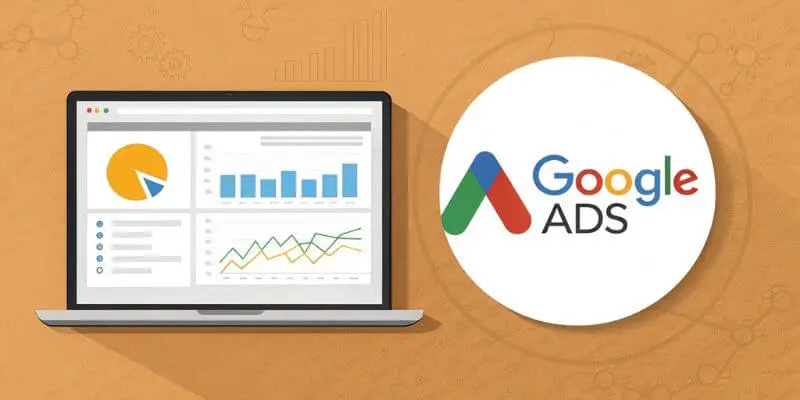
Google Ads is a paid marketing channel that helps to reach the audience instantly through Google. Although SEO and Google Ads do almost the same thing, the main difference is that SEO is a long-term organic way, while Google Ads is a paid method that helps your business appear at the top of search results within hours.
It allows you to target users who are actively searching for your products or services. This means higher chances of conversion.
With data-driven targeting, smart bidding, and measurable results, Google Ads ensures every click counts. It’s a great way to increase website traffic, leads, and sales while maintaining full control over your ad spend.
The main activities to run Google Ads are:
✅Search Campaign Optimization with AI Bidding
✅ PMax Campaigns for Omnichannel Reach
✅ Remarketing & Dynamic Product Ads
Search Campaign Optimization with AI Bidding
Search campaigns display your ads to people who search for keywords related to your business. Using Google’s AI-powered bidding can help you achieve the best results for the lowest cost. AI looks at user behavior, device type, and location to adjust your bids automatically for better performance.
This smart strategy saves time, increases click-through rates (CTR), and brings in higher-quality traffic.
➤ Key Activities Are:
- Researching high-intent keywords.
- Writing compelling ad headlines and descriptions.
- Using AI-based bidding strategies (e.g., Target CPA, Maximize Conversions).
- Adding negative keywords to avoid irrelevant clicks.
- Monitoring and improving ad performance regularly.
PMax Campaigns for Omnichannel Reach
Performance Max (PMax) campaigns use Google’s AI to show ads across many Google platforms. This includes Search, Display, YouTube, Discover, Maps, and Gmail. This helps your brand to be seen by potential customers wherever they spend time on the internet.
PMax campaigns automatically improve your ads, target audiences, and choose where to show them for the best results. It’s an effective way to boost your brand’s visibility and achieve consistent outcomes.
➤ Key Activities:
- Setting clear campaign goals and conversion actions.
- Uploading high-quality creative assets (videos, images, headlines).
- Letting AI optimize placements and budgets automatically.
- Tracking performance through insights and conversion reports.
- Continuously testing new ad variations.
Remarketing & Dynamic Product Ads
Remarketing helps you reconnect with people who visited your website but didn’t buy anything. Dynamic product ads take this a step further by showing them the exact items they looked at. This encourages them to return and finish their purchase.
This strategy keeps your brand in their minds and greatly improves conversion rates.
➤ Key Activities:
- Set up remarketing audiences in Google Ads.
- Use dynamic ad feeds to target specific products.
- Personalize ads for visitors who return to your site.
- Track and improve the paths that lead to conversions.
- Test frequency caps to prevent ad fatigue.
4️⃣ Content Marketing

Content marketing refers to creating and sharing helpful content to attract and engage your audience. Instead of promoting your products or services directly, it focuses on providing helpful information.
This strategy builds trust, increases organic traffic, and supports other digital marketing efforts like SEO and social media. Content marketing is all about delivering the right message to the right audience through useful, consistent, and relatable content.
The main activities in content marketing include:
✅ Writing blogs and long guides
✅ Creating videos, podcasts, and other visual content
✅ Using storytelling and personalizing content.
Blog Writing & Long-Form Guides
Blog posts and detailed guides are essential for content marketing activities. They help educate your audience, answer common questions, and establish your brand as a trusted expert. Long articles also perform well on search engines, bringing in steady organic traffic. By providing practical insights and solutions, blogs can turn readers into loyal followers.
➤ Key Activities Include:
- Research trending topics that are friendly to search engines.
- Write in-depth, valuable blog posts and guides.
- Use relevant keywords naturally in your content.
- Include visuals, infographics, and examples for clarity.
- Update older content to keep it fresh and accurate.
Video, Podcast & Visual Content
Modern audiences like visual content that engages them. Videos, podcasts, and infographics are great for this. They make complex ideas easier to understand and help your brand feel more human and relatable. Moreover, video content boosts retention and is widely shared across platforms like YouTube, Instagram, and LinkedIn.
At the same time, podcasts reach people on the go and build trust through genuine storytelling.
➤ Key Activities:
- Create short and long videos for different platforms.
- Record podcasts about important industry topics.
- Design infographics and visual materials to support blog posts.
- Turn one piece of content into several formats.
- Share visuals and videos through social media and email.
Storytelling & Content Personalization
Storytelling adds emotion and meaning to your content. It turns facts into experiences that audiences remember. Meanwhile, personalizing content ensures that each message feels tailored to individual needs and preferences.
Together, they create deeper emotional connections and improve engagement and conversion rates.
➤ Key Activities:
- Creating brand stories that show real challenges and solutions.
- Using data to personalize content for users.
- Writing case studies and success stories.
- Matching the content’s tone to the target audience.
- Testing and improving storytelling formats based on their performance.
5️⃣ Email Marketing
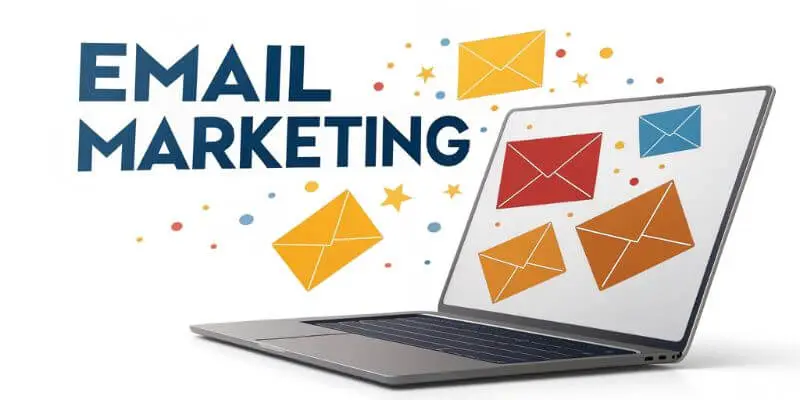
Email marketing is one of the most effective digital marketing practices for building long-term relationships with your audience. It lets businesses talk directly to customers, promote special offers, share helpful insights, and guide leads through their buying journey.
Unlike social media, email marketing gives you complete control over what you say and how you engage with your audience. It can increase conversions, improve customer retention, and strengthen brand loyalty while keeping costs low.
The three main email marketing activities are:
✅ Building and segmenting your list
✅ Automating and personalizing with AI
✅ Tracking campaign performance
List Building and Segmentation
Successful email marketing starts with a good subscriber list. To make sure your messages reach the right people, build and segment your list. Segmentation helps increase engagement by allowing you to send personalized messages based on how users behave, their demographics, or their purchase history.
➤ Key Activities Include:
- Collecting emails using signup forms, lead magnets, and pop-ups.
- Grouping subscribers by their interests or behavior.
- Regularly cleaning and updating your lists.
- Offering exclusive newsletters and content upgrades.
- Integrating forms with CRM tools for easy management.
Automation & AI-Powered Personalization
Automation saves time and ensures your communication is consistent. With AI-powered personalization, you can send smart messages that fit individual users.
These tools analyze how users interact to predict their preferences and automatically suggest products or content. This approach helps increase open rates and conversions.
➤ Key Activities:
- Set up automated welcome, nurture, and re-engagement messages.
- Use AI tools to create smart subject lines and optimize send times.
- Personalize emails with dynamic content blocks.
- Trigger campaigns based on user behavior.
- Test different email variations for better engagement.
Campaign Tracking Metrics
To improve performance, it is important to track metrics. Measuring your email marketing results helps you see what works and what needs to change. Analyzing campaign data helps you adjust content, timing, and targeting for better results.
➤ Key Activities:
- Monitor open rates, click-through rates (CTR), and conversions.
- Track bounce and unsubscribe rates.
- Measure engagement by device and location.
- Use A/B testing to improve future campaigns.
- Report results to enhance marketing strategies.
6️⃣ Video Marketing

Video marketing is a powerful tool for connecting with audiences online. It combines images, sound, and storytelling to help grab attention and share messages quickly. In 2025, brands that use video in their digital marketing activities see higher engagement, stronger message recall, and greater trust from their audiences.
With short videos and live streaming becoming popular on major platforms, businesses can use video marketing to educate, entertain, and convert customers more effectively.
Two effective types of video marketing are:
✅ Short-form video creation
✅ Live product demonstrations.
Making Short-form Content (Reels, Shorts, TikTok)
Short videos are great for today’s fast-moving audience. Platforms like Instagram Reels, YouTube Shorts, and TikTok let brands show their creativity in under a minute. This keeps viewers interested and encourages them to act quickly.
These short clips boost visibility, shareability, and brand recall. They also take less time to make than traditional ads.
➤ Key Activities Include:
- Create 15 to 60-second videos with strong hooks and clear value.
- Use popular sounds, hashtags, and visual effects.
- Show products, tips, or behind-the-scenes moments.
- Add captions and calls to action for better engagement.
- Track performance metrics like views, shares, and saves.
Live Streaming & Product Demos
Live streaming helps you connect with your audience in real time. It allows potential customers to ask questions, see how products work, and make quick purchase decisions.
From Q&A sessions to product launches, this format makes your brand communication more transparent and engaging.
➤ Key Activities:
- Host live product demos or tutorials.
- Collaborate with influencers for co-hosted streams.
- Engage with viewers through comments and polls.
- Turn live videos into short clips for later use.
- Promote upcoming streams through email and social media.
7️⃣ Conversion Rate Optimization (CRO)
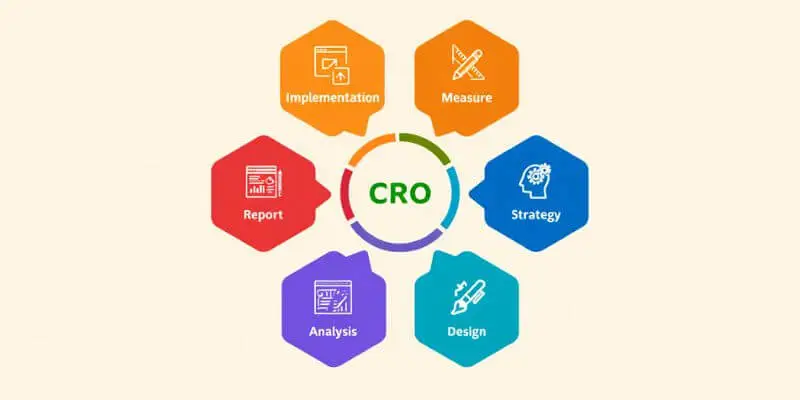
Conversion Rate Optimization (CRO) means improving your website or campaign performance. The goal is to increase the percentage of visitors who take desired actions like making a purchase, signing up, or filling out a form. It’s one of the most powerful digital marketing tasks that directly boosts ROI without increasing ad spend.
CRO focuses on understanding user behavior, testing new ideas, and refining every element of the customer journey. It helps businesses turn more clicks into loyal customers.
Landing Page A/B Testing
A/B testing means creating two or more versions of a landing page to find out which one works best. By testing different headlines, visuals, calls to action (CTAs), and layouts, marketers can see what connects with users.
This process is based on data and helps remove guesswork. It allows marketers to improve each visitor’s experience and increase conversions.
➤ Key Activities:
- Test different headlines and value propositions.
- Compare CTA colors, text, and button placements.
- Try alternative images, videos, or testimonials.
- Measure engagement and bounce rates for each version.
- Use the best-performing version in campaigns.
Funnel Optimization
Funnel optimization makes sure that every part of the customer journey, from learning about a product to making a purchase, runs smoothly and leads to more sales. This process focuses on reducing obstacles, improving communication, and providing a consistent experience.
By looking at where customers drop off and how they behave, businesses can improve each step to encourage action.
➤ Key Activities:
- Map and analyze the entire customer journey.
- Fix pages where many visitors leave or abandon their carts.
- Enhance calls to action (CTAs) and make content relevant at every step.
- Personalize offers for different audience groups.
- Track conversion rates at all stages of the funnel.
8️⃣ Marketing Automation & AI Tools
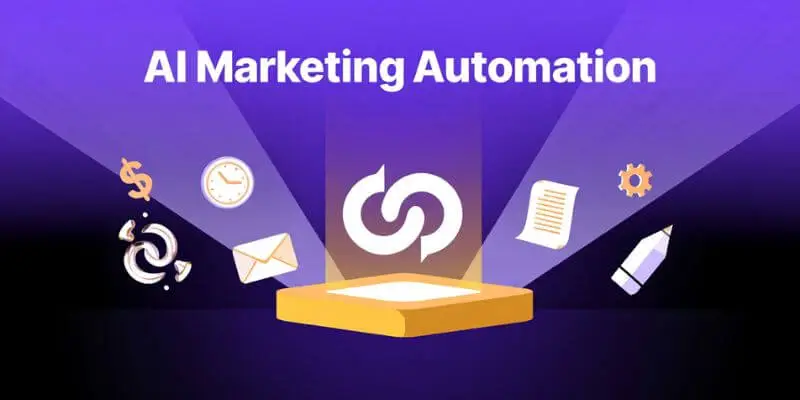
Marketing automation and AI tools have changed how businesses handle their digital marketing activities. Instead of spending hours on repetitive tasks, marketers can now automate their work. It helps send personalized messages and predict customer behavior using data.
These tools save time and make marketing more effective. By combining automation with AI, businesses can send the right message to the right audience at the right time.
Chatbots Creating
Chatbots are tools that help businesses communicate with customers 24/7. They quickly answer questions and collect information, making customer engagement faster and easier. Chatbots improve user experience by ensuring that every customer question gets a response, which builds trust and can increase sales.
➤ Key Activities Are:
- Creating chatbots for websites and social media.
- Automating lead qualification and follow-ups.
- Connecting chatbots with CRM and email tools.
- Tailoring chatbot conversations using user data.
- Monitoring response rates and satisfaction levels.
Predictive Analytics
Predictive analytics uses AI and machine learning to predict customer behavior. It helps marketers understand what actions customers are likely to take next, such as buying something or unsubscribing, so they can respond before it happens.
➤ Key Activities Include:
- Analyzing past campaign data for trends.
- Predicting customer churn and retention.
- Forecasting sales or lead generation.
- Optimizing ad spending based on predictions.
- Creating personalized offers based on customer behavior.
AI Copywriting
AI copywriting tools help marketers create content quickly, including ad copies, blog headlines, and email subject lines, while still being creative. AI can suggest, improve, and optimize content for audience engagement and search engine results.
When combined with human editing, AI helps ensure high-quality and consistent messages across all platforms.
➤ Key Activities Involve:
- Writing ad copies, blogs, and email subject lines.
- Using AI tools for content ideas that are good for SEO.
- Generating marketing content in multiple languages.
- A/B testing AI-generated text for better outcomes.
9️⃣ Affiliate Marketing
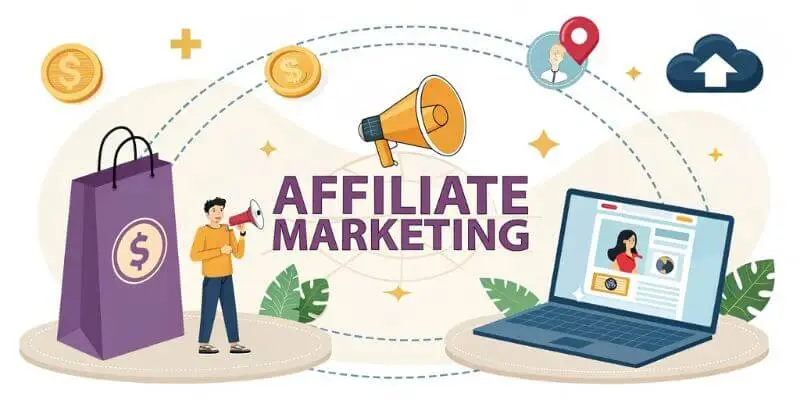
Affiliate marketing is a cost-effective way to increase sales. In this model, you work with affiliates or publishers who promote your products for a commission. This approach helps businesses reach new customers through trusted sources. Moreover, it builds credibility, increases sales, and ensures you only pay for actual results.
The three main affiliate marketing activities are:
✅ Partnering with affiliates
✅ Setting commission rates
✅ Using affiliate management software
Partnerships With Affiliates
To succeed in affiliate marketing, start by building the right partnerships. Choose affiliates who share your brand values. This leads to genuine promotion and better conversion rates. Strong partnerships create trust, boost sales, and improve your brand’s online presence.
➤ Key Activities:
- Find affiliates in your niche or industry.
- Launch affiliate recruitment campaigns.
- Provide marketing materials like banners, links, and coupons.
- Keep in touch regularly and review performance.
- Encourage collaboration on content or product reviews.
Set Clear Commission Rate
A clear and motivating commission structure keeps affiliates engaged and loyal. The commission rate should balance your business’s profits with fair rewards for affiliate efforts. Clear commission terms help avoid confusion and build long-term relationships.
➤ Key Activities:
- Define the commission type (CPS, CPA, CPC).
- Set competitive but realistic rates.
- Offer bonuses for high performers.
- Track conversions accurately with analytics tools.
- Review and adjust rates based on ROI.
Use Affiliate Management Software
Managing multiple affiliates can take a lot of time if you do it manually. Affiliate management software makes this easier. It tracks performance, generates reports, and handles payments, ensuring everything runs smoothly and transparently.
➤ Key Activities:
- Set up software like Post Affiliate Pro or PartnerStack.
- Automatically track affiliate performance and commissions.
- Provide dashboards for affiliates to see their progress.
- Manage payments and reports all in one place.
- Integrate software with eCommerce and CRM tools.
🔟 Analytics & Performance Tracking
Analytics and performance tracking are essential for a successful digital marketing strategy. Without good data, you can’t know what is working or where you need to improve.
They help businesses understand how users behave, how effective campaigns are, and what the overall ROI is. In summary, analytics keep every marketing effort focused on goals, optimized, and measurable.
Tracking The KPIs
Measuring Key Performance Indicators (KPIs) helps you see how well each campaign is doing. These KPIs show if your strategies match your business goals.
By using the right tools, you can track traffic, conversions, and engagement. This helps you make smarter adjustments quickly.
➤ Key Activities:
- Set clear goals for each campaign.
- Monitor where your traffic comes from and how long visitors stay.
- Track conversion rates and the quality of leads.
- Analyze bounce rates and time spent on each page.
- Use Google Analytics, Search Console, and CRM reports.
- Review performance data regularly for useful insights
Working To Improve It
Tracking data is not enough; you need to take action. Performance optimization means using analytics to make decisions that improve future results. By consistently improving, you can refine your campaigns for the best results and efficiency.
➤ Key Activities:
- Find channels or campaigns that are not performing well.
- Test different ad creatives, landing pages, or calls to action (CTAs).
- Update targeting settings to reach a better audience.
- Change content or keyword strategies based on data.
- Review monthly reports and set new performance goals.
Tools & Resources to Manage Digital Marketing Tasks
In today’s fast-paced marketing world, tools and resources make digital marketing activities easier and faster. They help businesses save time, reduce manual labor, and keep a consistent message across various platforms.
Moreover, integrating these tools creates a smooth workflow. This ensures that your campaigns can be easily tracked from a single dashboard and are based on data-driven insights.
From SEO to social media and email automation, there are both free and paid tools to simplify your daily tasks. Here they are:
Best Free & Paid Tools in 2025 (SEO, SMM, Email, Analytics)
Having the right tools makes digital marketing efforts more organized and effective. Here are some of the best free and paid tools for different marketing channels:
🔹 SEO Tools
Options | Tools | Activities |
Free |
| Help you track keywords and fix indexing problems. |
Paid |
| Offer advanced backlink analysis, keyword data, and competitive research. |
🔹 Social Media Marketing (SMM) Tools
Options | Tools | Activities |
Free |
| Let you schedule posts and track engagement. |
Paid |
| Help you manage multiple platforms, analyze data, and automate campaigns. |
🔹 Google Ads & PPC Tools
Options | Tools | Activities |
Free |
| Helps you find and plan keywords. |
Paid |
| Automate bidding, manage campaigns, and track performance. |
🔹 Content Marketing Tools
Options | Tools | Activities |
Free |
| Help you write clearly and without errors. |
Paid |
| Optimize long content for SEO and readability. |
🔹 Email Marketing Tools
Options | Tools | Activities |
Free |
| Allow you to send newsletters and automate emails. |
Paid |
| Offer advanced automation, segmentation, and A/B testing. |
🔹 Video Marketing Tools
Options | Tools | Activities |
Free |
| Easy tools for short videos. |
Paid |
| Offer professional video editing and YouTube optimization. |
🔹 Analytics & Tracking Tools
Options | Tools | Activities |
Free |
| Tracks web traffic and audience behavior. |
Paid |
| Help you visualize user journeys and get detailed conversion insights. |
How to Build a Strong Digital Marketing Strategy in 2025
A digital marketing strategy is a clear plan to reach your audience, promote your brand, and increase sales online. It’s essential because, without a strategy, marketing becomes guesswork. Here are the key steps to create an effective strategy:
✅ Research & Understand Your Audience
Start by finding out who your target audience is. Understand their needs, behaviors, and challenges. This helps you create messages that resonate with them.
✅ Choose the Right Marketing Channels
Pick the channels where your audience spends the most time. Focus on platforms that align with your goals and content type to increase engagement and visibility.
✅ Set SMART Goals
Define goals that are Specific, Measurable, Achievable, Relevant, and Time-bound. This keeps your marketing efforts focused and allows you to track progress.
✅ Plan and Schedule Content
Organize your content in advance to ensure consistency. Plan topics, formats, and posting times so your audience gets valuable updates on time.
✅ Track, Measure & Optimize
Monitor your performance using analytics tools. Regularly review data and improve your campaigns to boost returns and audience engagement.
Latest Trends and Future of Digital Marketing Landscape
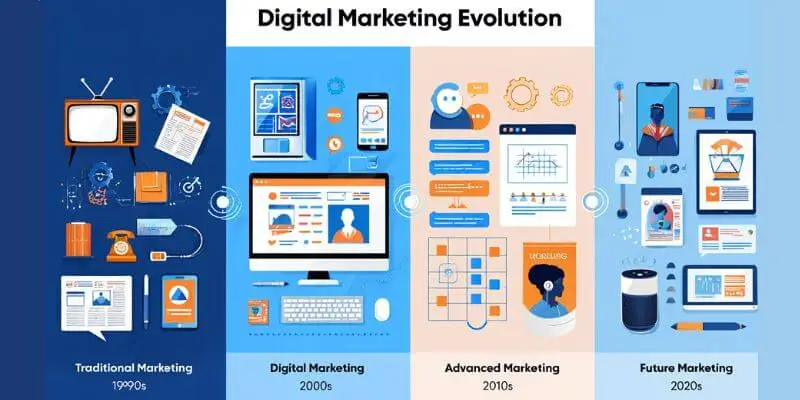
To run effective digital marketing, you need to understand how the marketing world is changing. Being aware of the latest trends helps you make better choices.
Let’s look at the top digital marketing trends for 2025 and the new ideas that are shaping the future.
🔹 Latest Trends
Here are the latest trends that are changing how brands connect with and sell to their audiences in 2025:
✅ AI in Marketing
AI is changing digital marketing by automating tasks, analyzing data, and delivering personalized content. It helps brands save time, target customers better, and improve campaign results.
✅ Voice Search SEO
With smart assistants like Alexa and Google Assistant, people now search by speaking. Brands need to focus on conversational keywords and a natural tone to ensure their content appears in voice search results.
✅ Privacy, Data Protection & User Trust
With stricter data laws, brands are focusing on transparency and security. Collecting data directly from users and ensuring their consent helps build trust and credibility over time.
🔹 Future Activities
Experts believe that augmented reality (AR), virtual reality (VR), and personalized marketing will shape the future of digital marketing. These changes will affect how brands connect with customers, advertise their products, and build trust.
✅ AR/VR Marketing
AR and VR will transform advertising. Companies will create 3D product demos, virtual stores, and events in the metaverse. This will let customers experience products before they purchase them.
✅ Hyper-personalization Marketing
Hyper-personalization uses AI to send messages tailored to each user’s behavior and needs. This approach helps increase sales and strengthens emotional bonds with customers.
Real-World Examples of Successful Digital Marketing Efforts
At Webbly Media, we, as a digital agency in Sweden, have helped over 1,000 clients across the country in the past seven years. During this time, we’ve seen how conducting the right digital marketing activities can deliver impressive ROI and lasting results. Let’s explore some success stories that show how smart strategies led to significant growth in various industries and cities.
Case Study 1: E-commerce Brand Using SEO and Social Media
A fashion e-commerce store in Stockholm improved its product pages with SEO and ran regular Instagram campaigns. In six months, their organic traffic increased by 70%, and sales rose by 45%.
Case Study 2: Service Business with Local SEO and Ads
A home-cleaning service in Gothenburg used local SEO by enhancing their Google Business Profile and running effective Google Ads. As a result, local leads doubled within three months.
Case Study 3: Personal Brand Growth through Content Marketing
A fitness coach in Malmö used blogs, YouTube, and newsletters to share valuable content regularly. This strategy increased engagement, attracted thousands of new followers, and brought in high-value clients. This way, the coach became a well-known voice in Sweden’s health and fitness community.
Get Complete Digital Marketing Solutions From Webbly Media

In today’s digital world, the right marketing partner can make a big difference. At Webbly Media, we provide complete digital marketing solutions to help businesses grow quickly and effectively. We focus on conversions, brand awareness, and long-term success, not just traffic. As a trustworthy digital marketing agency, we treat every project with care and creativity. Whether you are a startup or an established company in Sweden, Webbly Media is here to help you.
➤ Why Choose Us:
- 7+ years of proven experience
- 5-star digital marketing services
- 24/7 online support, serving nationwide
- Affordable and transparent pricing
- Customer-friendly behavior
- 100% Satisfaction Guarantee
Check us out on Google and contact us today for expert help.
Frequently Asked Questions
The key digital marketing activities include search engine optimization, social media marketing, Google Ads, email automation, and tracking performance. These activities help improve brand visibility, increase engagement, and boost conversions.
First, define your goals. Then, research your audience, choose the best channels, create engaging content, and track your results to improve your marketing over time.
You should plan to spend about 8–12% of your annual revenue on digital marketing. However, the exact amount depends on your business goals, size, and competition.
Generally, you can see SEO results within 3–6 months. However, this timeframe can vary based on competition, the quality of your website, and how consistently you optimize different aspects.
Yes, AI can personalize content, automate campaigns, analyze user behavior, and optimize ads. This saves time and improves accuracy and engagement.
Email marketing and SEO tend to provide the highest ROI. They offer steady, long-term engagement without high ongoing ad costs.
You should review and adjust your marketing strategy every quarter. This helps you keep up with changing audience trends, platform updates, and business goals.

